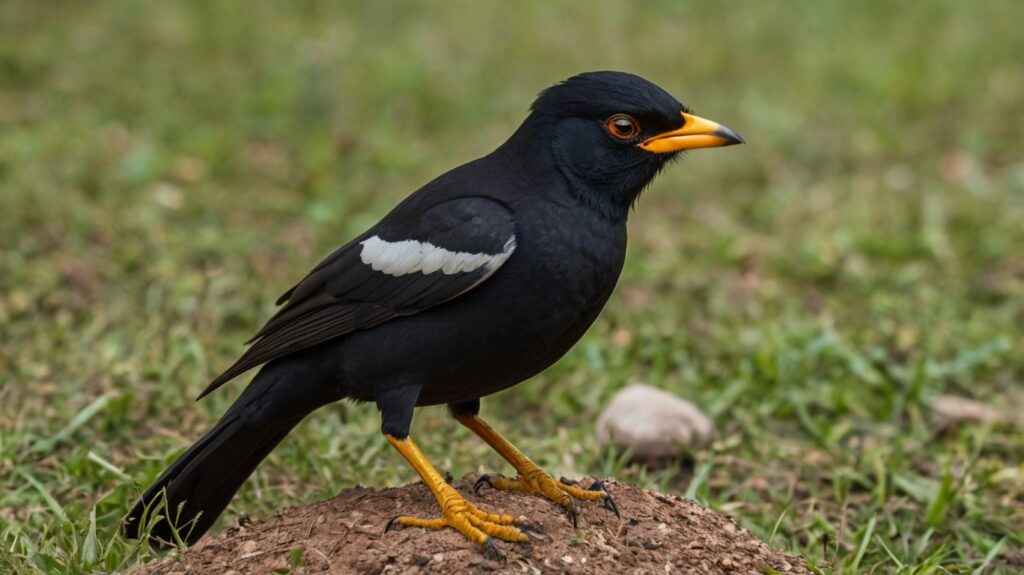Table of Contents
- Introduction
- Physical Characteristics
- Habitat and Distribution
- Diet and Feeding Habits
- Behavior and Vocalizations
- Breeding and Reproduction
- Conservation Status
- FAQs About the Common Hill Myna
- Conclusion
Introduction
The Common Hill Myna (Gracula religiosa) is a fascinating bird known for its striking appearance and exceptional vocal mimicry. Native to South and Southeast Asia, this species is highly sought after as a pet due to its ability to imitate human speech. In this guide, we’ll explore its physical traits, habitat, behavior, and conservation status.

Physical Characteristics
The Common Hill Myna is a medium-sized bird, measuring 25–30 cm in length. Key features include:
- Glossy black plumage with iridescent purple and green hues
- Bright yellow-orange facial wattles (skin patches)
- A strong, curved yellow beak
- White wing patches visible in flight
Habitat and Distribution
This bird thrives in:
- Tropical forests
- Hill regions (up to 2,000 meters elevation)
- Agricultural areas with tall trees
Geographical Range:
- India (Western Ghats, Northeast)
- Southeast Asia (Thailand, Malaysia, Indonesia)
- Introduced populations in Hawaii and Florida
Diet and Feeding Habits
The Common Hill Myna is omnivorous, feeding on:
- Fruits (figs, berries)
- Insects (beetles, caterpillars)
- Nectar and small reptiles
Behavior and Vocalizations
- Highly social, often seen in pairs or small flocks
- Known for mimicking sounds, including human speech and other bird calls
- Territorial during breeding season
Breeding and Reproduction
- Nesting: Tree cavities, often reused yearly
- Eggs: 2–3 blue-green eggs per clutch
- Incubation: 14–18 days
- Fledging: Chicks leave the nest after 4–5 weeks
Conservation Status
- IUCN Status: Least Concern (but declining in some regions)
- Threats: Habitat loss, illegal pet trade
- Protection: Listed under CITES Appendix II
FAQs About the Common Hill Myna
1. Can the Common Hill Myna talk like a parrot?
Yes, it is one of the best mimicking birds, often surpassing parrots in clarity.
2. Is it legal to keep a Hill Myna as a pet?
In many countries, a permit is required due to CITES regulations. Always check local laws.
3. How long do Hill Mynas live?
In captivity: 15–25 years; in the wild: 8–12 years.
4. What’s the difference between a Hill Myna and a Common Myna?
Hill Mynas have yellow wattles and prefer forests, while Common Mynas (Acridotheres tristis) are urban dwellers with brown bodies.
Conclusion
The Common Hill Myna is a captivating bird, admired for its intelligence and vocal talents. While its populations are stable in some areas, conservation efforts are crucial to protect it from habitat destruction and illegal trade.
